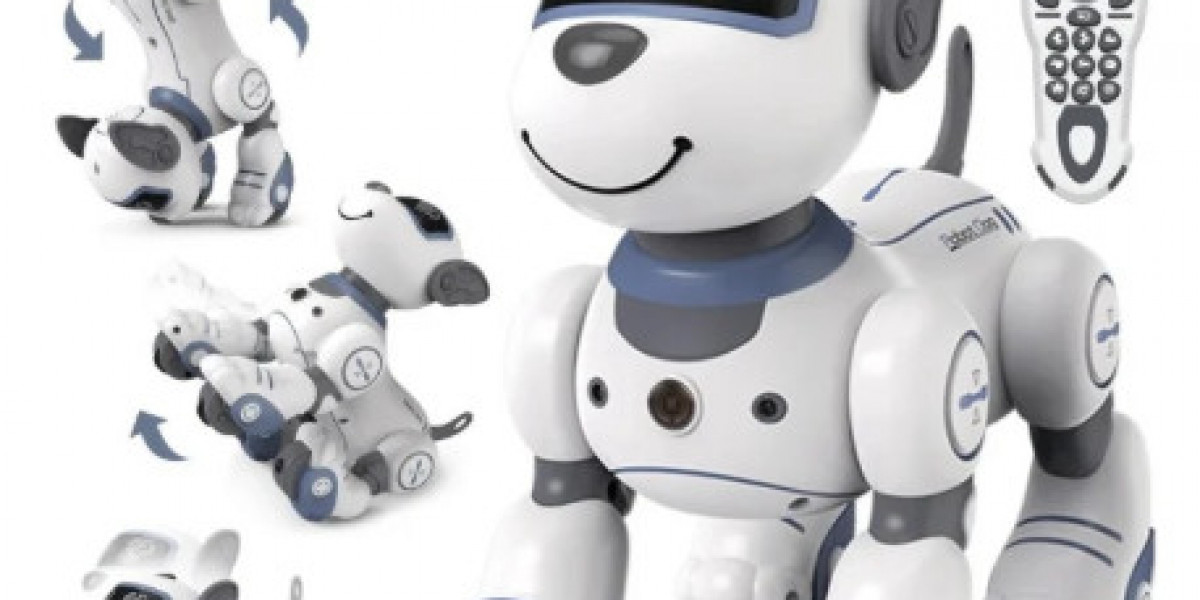In recent years, the idea of robotic companions has gained massive popularity. Among the many innovations in the field of robotics, one of the most intriguing is the advent of the Robot Dog. These machines, designed to mimic real dogs in form and function, have captured the imagination of many. But can a robot dog truly replace a real pet and perform tasks just like a real dog? The answer lies not just in the technology behind them, but in understanding the roles that both real dogs and robot dogs can play in society.
The Rise of Robot Dogs
The development of robot dogs is part of a broader trend where robots are being designed to serve multiple roles, from helping in industrial settings to providing companionship in homes. The idea of having a robotic pet that can act and look like a dog has appealed to various sectors, including pet owners, tech enthusiasts, and even medical professionals.
Robot dogs like Boston Dynamics' Spot or Sony's Aibo are a few examples of how advanced these machines have become. These robotic dogs are not simply mechanical toys; they are highly sophisticated devices powered by artificial intelligence and equipped with sensors, cameras, and motors that allow them to move, learn, and respond to their environment.
The Role of Robot Dogs in Society
While a robot dog cannot replace a real dog in terms of emotional connection, they can certainly perform various tasks that make them useful in specific contexts. Let's explore how robot dogs are contributing to society.
1. Companionship for the Elderly and Disabled
One of the most notable applications for robot dogs is in providing companionship for elderly or disabled individuals. Many older adults experience loneliness, and having a pet can alleviate feelings of isolation. However, not everyone is capable of taking care of a real dog. Whether due to physical limitations, allergies, or simply the inability to provide the level of care that a pet needs, robot dogs are stepping in as alternatives.
Robot dogs can be designed to interact with their owners, offering a sense of companionship without the responsibilities that come with caring for a live animal. They can engage in simple activities, such as responding to voice commands, providing reminders for medications, or simply acting as a source of comfort through their presence.
2. Search and Rescue Operations
Another area where robot dogs shine is in search and rescue missions. In environments where it may be too dangerous for human rescuers to go, robot dogs can be deployed to navigate challenging terrains. Their ability to move over rocky landscapes, through rubble, or even under water makes them an excellent tool for locating survivors in disaster zones.
These robot dogs are equipped with cameras and sensors to gather crucial information, such as thermal imaging, which helps identify heat signatures in rubble or areas where human rescuers might struggle. They can be controlled remotely, allowing rescuers to monitor the situation without putting themselves at risk.
3. Security and Surveillance
Security companies have also started incorporating robot dogs into their operations. These robots are equipped with cameras, motion sensors, and microphones to patrol properties and monitor activities. They can roam specific areas, report back suspicious activity, and even interact with people to ask for identification or check credentials. Their agility and ability to navigate various environments make them ideal for security tasks that would otherwise require a human or a real dog.
4. Technological Advancements in Robotics
The robot dog’s rise is a direct result of advancements in technology. Modern-day robot dogs are capable of learning and adapting to their surroundings, much like a real pet. With the use of artificial intelligence, these robots can perform a variety of tasks that make them highly versatile. From following commands to avoiding obstacles, robot dogs continue to improve in functionality.
Additionally, they are being integrated into smart home systems, allowing users to control them through mobile apps or voice commands. Some robots even learn from their interactions and can anticipate their owners' needs.
What Makes Robot Dogs Different from Real Dogs?
While robot dogs have their uses, it's important to remember that they are fundamentally different from real dogs. A robot dog may be able to perform tasks, offer companionship, or help in rescue operations, but it cannot replicate the emotional bond between a human and a living animal.
Emotional Bond
Real dogs are known for their ability to form deep emotional connections with their owners. They can sense their owners’ moods, provide comfort during times of stress, and form bonds that are built over time. A real dog’s love is unconditional, and their companionship is often a source of emotional support that robot dogs cannot offer.
While robot dogs may engage with their owners, they cannot truly understand the emotional needs of their human companions. The interactions may be programmed responses rather than genuine emotional reactions.
Physical Interaction
Another aspect where robot dogs differ from real dogs is physical interaction. Dogs provide tactile affection through petting, cuddling, and playing. This physical contact can release oxytocin, often called the "love hormone," which promotes bonding and feelings of happiness. While robot dogs may simulate physical interactions, they cannot replicate the warmth, texture, and presence of a real dog.
Maintenance and Care
Taking care of a real dog involves feeding, grooming, walking, and ensuring their well-being. This is a responsibility that real dogs require from their owners. Robot dogs, on the other hand, require minimal maintenance – mostly involving charging, software updates, and occasional repairs. In a sense, robot dogs are more convenient but lack the genuine care that a living pet needs.
Robot Dogs in Popular Culture
Robot dogs are not just confined to the world of technology and robotics. They have also become a significant presence in popular culture. Films, television shows, and books have all depicted robotic dogs as companions, helpers, or even as part of dystopian futures. Their portrayal often highlights both the possibilities and the limitations of having such advanced technology.
In some stories, robot dogs are seen as a tool of control, while in others, they act as loyal companions that help their owners in various ways. These portrayals shape how people view robot dogs and what role they could potentially play in our lives.
The Future of Robot Dogs
Looking forward, the possibilities for robot dogs are vast. As technology continues to evolve, these machines will become more capable of performing intricate tasks and engaging with humans in a way that feels more natural. Researchers and developers are working on improving their autonomy, learning abilities, and even emotional intelligence.
There may come a time when robot dogs become part of daily life, serving roles in homes, hospitals, workplaces, and even outdoor adventures. However, the core question remains: will they ever replace real dogs? The truth is, robot dogs will likely never fully replace the emotional connection and companionship that a living dog can provide. However, they can serve as valuable companions and assistants in specific contexts, helping humans in ways that real dogs might not be able to.
Final Thoughts
The advent of robot dogs represents an exciting step forward in the integration of robotics into our daily lives. While these machines can perform impressive feats and offer companionship in certain circumstances, they cannot replace the true emotional bond that comes with having a real dog. Instead, robot dogs should be seen as useful tools, capable of helping in specialized tasks and providing companionship in specific scenarios. As technology advances, the future of robot dogs looks promising, and they will undoubtedly continue to play an important role in various fields, from healthcare to security and beyond.






